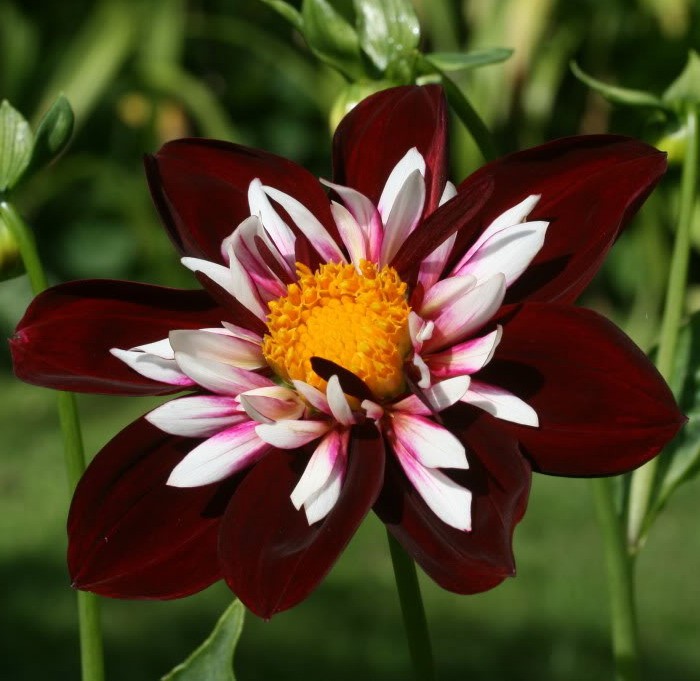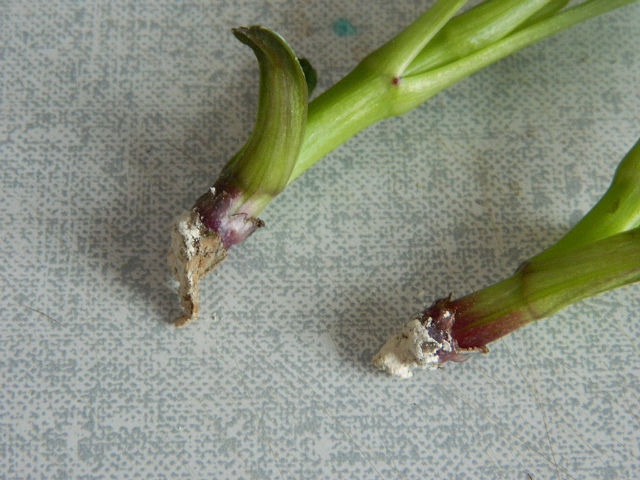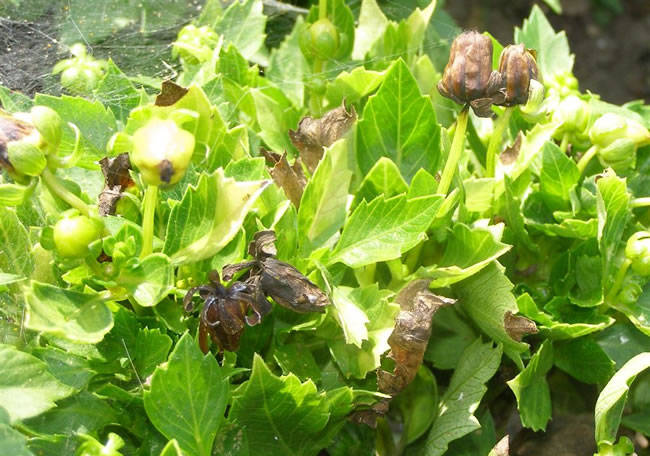Content:
Luxurious dahlias can decorate any garden. In return for their care, they delight with an unimaginable number of different varieties, a rich palette of colors and a long flowering period. It is with dahlias that the children go to school after the summer holidays. To grow these flowers properly, you need to know everything about dahlias.
Description
The dahlia was originally called dahlia. The flower received its Latin name in honor of the botanist from Sweden - A. Dahl. In Russia, the flower was named after the geographer and botanist I. Georgi. The main growing area of dahlia dahlia is Eurasia, South and Central America, Australia. The homeland of wild dahlias is the mountainous region of Mexico, Colombia, Guatemala. From there, at the end of the 18th century, they migrated to Europe.
The dahlia flower was used by the Mayan tribes to decorate temples, and the Aztecs added it to their food and used it as a medicine. The Indians revered the dahlia as a gift from the sun. Europeans also appreciated the extraordinary beauty of the flower.
Flowers that look like dahlias so much that only a specialist can distinguish them are asters. The shape of the inflorescence, the petals are very similar, only the size differs.
Beneficial features
Dahlia can boast not only beauty. Its bulbs and flowers contain a number of useful substances: vitamins, organic acids, minerals, proteins, inulin. Scientists in America and European countries isolate fructose from inulin, a polysaccharide. It serves as a natural substitute for sugar and starch, and is used to treat diabetes mellitus.
Characteristic
Dahlias belong to the genus of perennial herbaceous tuberous plants of the Asteraceae or Asteraceae family. A description of what dahlias look like is given using the example of the most popular variety - cultural or diverse dahlias.
Botanical characteristics of dahlia: the inflorescence is a basket, the diameter of which varies from 3 to 30 cm. The center of the inflorescence is occupied by tubular flowers of a yellow or brown shade. In their natural form, they are bisexual and bear fruit. But the breeders have also created an inflorescence entirely composed of non-fertile reed flowers, which makes it look dense and spherical. The central part of the inflorescence is surrounded by pistillate ligulate flowers, which have a variety of shapes, colors and sizes.
Other signs of a dahlia:
- The storage type rhizome is the root tuber. His life span is estimated at 5 years. Each year, new root tubers are formed, and the existing tubers increase in size.
- Stem: straight, branched, hollow in internodes, woody at the base. Reaches a height of 30-250 cm.
- Dahlia leaves are opposite, pinnate, simple in some species. Can be complex or simple, with early pubescence. The color is most often dark green, occasionally purple-brown.
- The fruit is an achene, 1 g contains a seed - about 140 pieces.
- Sepals - 7.
When do dahlias bloom? The month of the beginning of the appearance of flowers is July. The flowering period lasts 90 days, from July or August until the very frost.
Types and varieties
About 15 thousand varieties of dahlias have been bred. Depending on the height, there are 2 types of dahlia:
- flower bed, from 30 to 60 cm high;
- curb: tall (over 1.2 m), medium-sized (from 0.9 to 1.2 m), undersized (from 60 to 90 cm).
Dahlia classification by flower size: miniature (up to 10 cm), small (10-15 cm), medium (15-20 cm), large (20-25 cm), giant (from 25 cm).
According to the International classification, dahlia flowers are divided into 12 classes:
- simple (non-double);
- anemic;
- collar;
- nymphaean;
- decorative;
- spherical;
- pompom;
- cactus;
- semi-cactus;
- mixed (orchid, chrysanthemum, peony, star);
- fringed;
- midgets.
Domestic gardeners know about 150 varieties, but basically only 5 popular garden varieties are grown: spherical, pompom, single-row, decorative, mixed. Regardless of which variety is chosen, you need to follow the correct planting and care technology.
Planting and leaving
The dahlia flower is quite unpretentious, but the flowering period can be extended if, when growing them, all the subtleties of agricultural technology are taken into account. Caring for dahlias is in many ways similar to growing gladioli.
Location and ground
Choose a place on the south or southeast slope, protected from the wind. Do not plant dahlia in lowlands where cold air accumulates. It is important that the groundwater level does not exceed 60-70 cm from the ground surface. Flowers can grow well even in the shade, but will bloom late, do not reach their maximum size and color. If you plant dahlia flowers in partial shade, they can stretch out. If the flowers receive enough sunlight, they will bloom faster.
You can improve the quality of the soil by adding organic fertilizers: manure, humus, compost, peat, turf, straw cutting. Clay soils are diluted with sand, peat, gravel, coal ash. Clay, vermiculite, peat must be added to sandy soils.
Landing features
In April, the tubers are prepared for planting, cleaning from damage, dried out shoots. Then they are planted in boxes with peat, holding for about 2 weeks. After the buds appear, the tubers are cut and planted in open ground.
Planting times in open ground depend on the local climate. For example, the time for the middle lane is after June 1-10. If the soil has had time to warm up earlier, then divided tubers with eyes can be planted between May 15 and 20.
For the landing procedure, it is better to choose cloudy weather or wait for the evening. Planting is carried out in a hole, the size of which should be three times the size of the tuber. For tall flowers, a sturdy stake should be installed near each hole. The distance between the rows is from 100 cm, between the plants - from 60 to 100 cm. The planted dahlias are tied to a support in 2-3 places, and then - as they grow. After 14 days, shoots appear, which should be covered at the slightest threat of frost.
What are the best dahlias to plant, perennial or annual? If you don't want to dig up and store tubers, then you can grow seedlings of annual dahlias from seeds. They will be able to bloom as gorgeous as perennials. If you want to enjoy flowering almost until winter, you will have to make an effort to grow perennial dalys.
Care
The land under the bush dahlias must be kept moist, but not brought to waterlogging. In hot and dry weather, watering is carried out daily. The soil needs to be loosened, free from weeds after each watering and top dressing. As soon as the buds have formed, the loosening procedure is stopped, and the soil is mulched with peat, humus. When cold weather sets in, dahlias are spud to a height of 15-20 cm to protect them from frost.
As soon as the first frosts are recorded, the tubers begin to dig up. The remaining shoots and leaves are removed so that no more than 5-10 cm of the stem remains. After preparing the tubers, they are left to winter in a box of peat, sprinkled with sawdust on top.
Bush formation
The formation of the bush is of great importance for the quality of flowers and depends on the growing method:
- In dahlias grown from a tuber, only a couple of the strongest shoots need to be preserved, the rest are recommended to be cut off.
- One stem is enough for cut dahlias. To give the bush splendor, pinch the top of the stem above the third node. This results in the formation of two stems.
Large-colored dahlia need to be pinned regularly. Small-flowered, pompom, dwarf and collar varieties do not need this procedure. Most dahlias need extra buds to be removed. If the flowers are grown for cutting, then the middle one is removed from the 3 buds, since its peduncle is shorter. After that, the side buds can bloom in full force.
Reproduction
Dahlias can be propagated by basal cuttings, dividing root tubers, seeds.
Diseases and pests
The main pests of dahlias are leaf-sucking and leaf-eating insects:
- Slugs. They are collected by hand from pieces of film spread out on the ground. Treat the soil under the flowers with pepper, superphosphate, metaldehyde.
- Earwigs. Use spraying with bitter decoctions of celandine, wormwood.
- Aphid. A small infestation of aphids is eliminated by washing with water or trimming the leaves. Spraying the bushes with infusion of onion peels, garlic, a solution of soap and ash is used. In case of severe damage, drugs are used: Aktara, Fitoverm, Decis.
- Red spider mite. Dahlia leaves are sprayed with cold water, insecticides are used.
Due to illiterate agricultural techniques and poorly chosen planting site for dahlia, the risk of such diseases increases:
- fusarium wilting;
- powdery mildew;
- rot.
Preventive measures consist in the use of spraying with drugs: Fitosporin-M, Oxyhom, Fundazol. Before germination and storage, tubers should be treated with fungicidal agents.
If the most dangerous diseases for dahlias are found: viral mosaic and bacterial cancer, the flowers will have to be dug up and destroyed. This place is not suitable for a new planting for 4 years.
FAQ
When do dahlias bloom? This plant is late flowering, usually flowers appear in August-September and continue to bloom until frost.
Can dahlias get pollinated? When grown with tubers, no. If grown by seeds, then cross-pollination of dahlias is possible.
Can dahlias change color? If different varieties are stored together, then they are able to interbreed even in winter, changing their color, structure, shape.
If you really get involved in breeding dahlias, then even a beginner can easily become a master. Studying the diversity of dahlia varieties can be a lifelong endeavor.





















